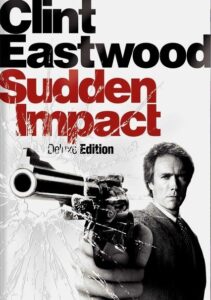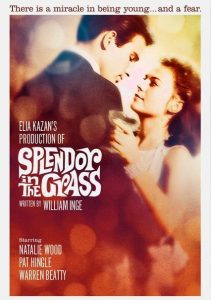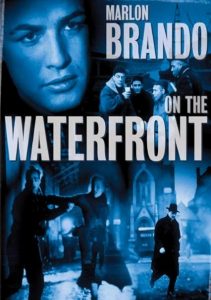Sudden Impact-1983
Director Clint Eastwood
Starring Clint Eastwood, Sondra Locke
Scott’s Review #1,388
Reviewed August 12, 2023
Grade: B+
The groundbreaking and highly influential Dirty Harry, released in 1971 spawned four sequels. Sudden Impact (1983) is the third. It is directed, produced by, and stars Clint Eastwood (making it the only Dirty Harry film to be directed by Eastwood himself) and co-starring Sondra Locke, the star’s longtime girlfriend.
On the surface, the film is standard fare and relatively conventional featuring slick cinematography, a predictable story, shoot ’em-ups, and cartoon villains.
It’s also quite bloody and violent with a theme of justice being served.
Exactly what you’d expect from any action/thriller to come out in the two decades following the original.
The cliches and story setups had by 1983 been seen in so many crime thriller genre films that they feel tired and stale and can be predicted at length.
The expected Dirty Harry catchphrase in Sudden Impact is, “Go ahead, make my day” which is probably what the film is best remembered for though some assume the famous line appears in Dirty Harry.
This isn’t a glowing testament for Sudden Impact.
United States President Ronald Reagan embarrassingly used the “make my day” line in a March 1985 speech threatening to veto legislation raising taxes.
The secret weapon of Sudden Impact though is the inclusion of Locke who is a tour de force in acting and raises the film quite a bit. Her romance with Eastwood (on and off the silver screen) simmers with chemistry making Sudden Impact feel like a much better film than it is.
Jennifer Spencer (Sondra Locke) is a thirty-something blonde bombshell who along with her much younger sister was gang raped, but the crime went unpunished. She now hunts down those responsible one by one and gruesomely shoots them in the testicles before killing them.
She’s not a gal to be messed with.
The murders attract the attention of Harry Callahan (Eastwood), who is on a forced vacation due to his violent approach to police work.
The case gets complicated when Harry develops a relationship with Jennifer, and it’s up to Harry to make the right decision when Jennifer’s life is threatened for a second time.
Locke and Eastwood always do well with marginal material- think Bronco Billy (1980) or Every Which Way But Loose (1978). Both of those films are more comical so it’s riveting to see them co-star in a violence-based thriller.
Not to dwell on Locke (okay, I must), but she’s the best part of Sudden Impact. The first scene involves one of her vigilante murders and her cold, calm, steadiness is magnificent. Through icy eyes, she is filled with rage though is wise and calculating.
When she is not blowing balls to bits, Jennifer leads a successful life as an author and escapes to a whimsical carnival town outside San Francisco to focus on her work. She also finds time to finish killing the remaining members of the gang of rapists.
Locke mesmerizes in every scene she appears in.
Eastwood is good too but his character is the same grizzled, sick of criminal, guy with a gun he’s been since the beginning. Harry’s arguments with the suits in the top office are tired and the actors cast are handily stock types.
The win is Eastwood’s scenes with Locke. As they share dinner there is a romantic tenderness that perfectly offsets the rest of the story. We ask, will he send her to prison or let her go when he inevitably finds out she’s the killer?
Is she justified?
The rapists are cartoon-like and poorly cast and there is no character development. The main villain, Mick (Paul Drake) shrieks and wails and delivers his dialogue in over-the-top fashion. He’s a poor man’s ‘Scorpio’ who he tries to emulate.
A female villain, an assumed lesbian named Ray Parkins, in a purely politically incorrect fashion, has every lesbian stereotype imaginable.
I liken Sudden Impact (1983) to a McDonald’s meal. A greasy Big Mac, fries, and a shake. It’s not fine dining but it’s satisfying and one knows exactly what to expect. Only in this case, Locke is the special sauce.



